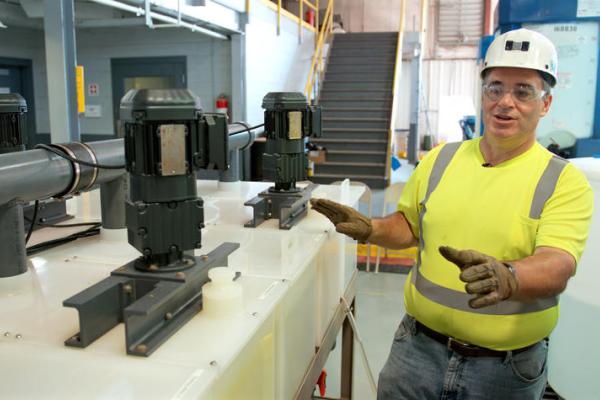UK Joins U.S. Department of Energy Battery Research Partnership

The University of Kentucky has been named a partner on a $120 million, five-year second phase of the Joint Center for Energy Storage Research (JCESR), a U.S. Department of Energy (DOE) Innovation Hub focused on advancing battery science and technology.
Susan Odom, an associate professor of chemistry in the UK College of Arts and Sciences, is the principal investigator of the UK project. Odom and her team will study solvation of organic redox couples in complex environments, which are relevant to numerous energy storage technologies, including redox flow batteries — a technology of interest for large-scale grid storage.
The grant will allow Odom to hire two postdoctoral scholars, which will also provide opportunities for undergraduate and graduate students to be mentored by trained experts in organic synthesis and electrochemistry.
Odom says her collaborative relationships with teams in JCESR's first phase is one of the reasons that UK was added to this Innovation Hub.
"We have a strong history of collaborating with JCESR team members, including groups at Massachusetts Institute of Technology, Argonne National Laboratory and the University of Illinois Urbana-Champaign,” Odom said. “Our recent work with MIT has resulted in two publications on redox flow battery materials."
The mission of JCESR is to create game-changing, next-generation energy storage technologies that will transform transportation and the electric grid in the same way lithium-ion batteries transformed personal electronics. The project’s first five years have produced more than 380 published papers.
“The knowledge we’ve gained has introduced new approaches to battery research and development and will guide our research in transformative materials for next-generation batteries for many years,” said George Crabtree, JCESR director.
The Joint Center for Energy Storage Research is a major partnership that integrates researchers from many disciplines to overcome critical scientific and technical barriers and create new breakthrough energy storage technology. Led by the U.S. Department of Energy’s Argonne National Laboratory, partners include national leaders in science and engineering from academia, the private sector and national laboratories. JCESR will deliver transformative materials for batteries — including cathodes, anodes, electrolytes and interfaces — by designing and building them from the bottom up, atom-by-atom and molecule-by-molecule, where each atom or molecule plays a prescribed role targeting overall materials behavior.
More from this series Research Priorities - Energy
Credits
text by Jenny Wells, UK Public Relations & Marking



